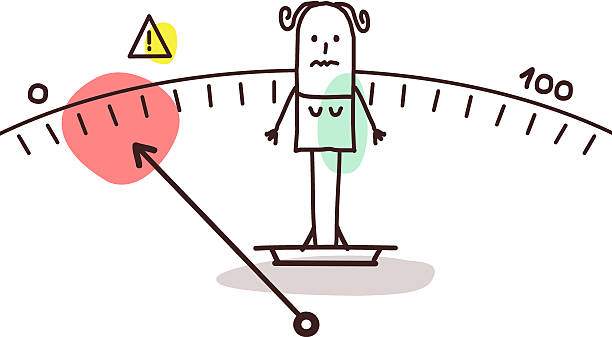Published on: December 7, 2021

WAY TO TACKLE MALNUTRITION
WAY TO TACKLE MALNUTRITION

MALNUTRITION
- Term that refers to any deficiency, excess or imbalance in somebody’s intake of energy and/or nutrients
- Either be due to inadequate intake or an excess intake of calories
- Covers two broad groups of conditions are as follows
- Undernutrition – Includes stunting (low height for age), wasting (low weight for height), underweight (low weight for age) and micronutrient deficiencies or insufficiencies (a lack of important vitamins and minerals)
- Overnutrition – Includes overweight, obesity and diet-related non-communicable diseases (such as cardiovascular disease, hypertension, cancer, and type-2 diabetes.)
NATIONAL FAMILY HEALTH SURVEY (NFHS)-5
- Tardy progress in reducing undernutrition, wasting and stunting
- 5% of under-five children are stunted and 19.3% are wasted
- Childhood anaemia has worsened from NFHS-4
- Anaemia among adolescent girls and women aged 15-49 has also worsened
- Though institutional delivery has gone up, early initiation of breastfeeding is static
CAUSES
- Barriers to health services include
- High cost of care
- Inadequate or no insurance coverage
- Lack of availability of services.
- Poverty is the single most common cause of food insecurity. It hinders the accessibility of adequate food
- Early marriages of girls – teenage pregnancies – low birth weight of the newborns – poor breastfeeding practices – poor complementary feeding practices.
- Lack of availability of safe drinking water hinders proper digestion and assimilation of food and also cause water and food borne diseases.
- Poor sanitation
- Linked to transmission of diseases such as cholera, diarrhoea, dysentery, hepatitis A, typhoid and polio and exacerbate stunting
- Reduces human well-being, social and economic development.
- Lead to spread of many diseases that sap children’s energy and stunts their growth.
- Illiteracy in women and large household size.
- Lack of Awareness about nutritional needs of infants and young children.
EFFECTS
- Increased vulnerability to diseases like diarrhoea, measles, malaria and pneumonia.
- Chronic malnutrition can impair a young child’s physical and mental development.
- Cognitive impairment resulting from malnutrition may result in diminished productivity in academic performance.
- As per estimates of World Bank, childhood stunting may result in a loss of height among adults by 1%, which may further lead to a reduction in individuals economic productivity by 1.4%
- Puts women at a greater risk of pregnancy-related complications and death (obstructed labour and hemorrhage).
- Greatly impedes a country’s socioeconomic development and potential to reduce poverty
WHAT HAS GOVERNMENT DONE
- POSHAN Abhiyaan or National Nutrition Mission: It is Government of India’s flagship programme to improve nutritional outcomes for children, pregnant women and lactating mothers.
- Under it the Anemia Mukt Bharat (AMB) Strategy was launched in 2018 with efforts to improve Iron and Folic Acid (IFA) supplementation, behaviour change and anaemia-related care and treatment across six target groups including pregnant women, lactating mothers, and children.
- Integrated Child Development Scheme (ICDS): It aims to improve the nutritional and health status of children in the age-group 0-6 years and reduce the incidence of mortality, morbidity, malnutrition and school dropout.
- Public Distribution System: It provides coverage to upto 75% of rural population and upto 50% of urban population for receiving highly subsidized food grains under Targeted Public Distribution System.
- Midday meal scheme: The scheme provides meals for all school children studying in Classes I-VIII of Government, Government-Aided Schools.
WHAT MORE CAN BE DONE
- Role of Healthcare workers
- Anganwadi workers, ASHA workers and Auxiliary Nurse Midwives
- Must continue to monitor exclusive breastfeeding till the infant is six months old
- Must record the timely initiation of complementary feeding with soft gruel
- This is the critical period of growth that we cannot afford to compromise on
- Ensure that there is take-home ration for under-three children through the regular supply of supplementary nutrition from the Integrated Child Development Services.
- Anganwadis must be made more efficient mode of inspections
- To check poverty – It is important to monitor the Mahatma Gandhi National Rural Employment Guarantee Scheme workdays as well as the wages earned in areas where droughts frequently recur; where there is mass migration; and where there is prevalence of high malnutrition.
- The National Nutrition Monitoring Bureau must be reopen
- Real-time monitoring of the Public Distribution System (PDS) will go a long way in ensuring food at the family level. The aim of the National Food Security Act of 2013 is to ensure that nobody goes to bed hungry and there is no starvation. The PDS is focused on procuring wheat and rice through the Food Corporation of India to distribute to families. Cereals fill the stomach and hunger is averted, but not malnutrition.
- Both Poshan Abhiyan and the Pradhan Mantri Garib Kalyan Anna Yojana need to be monitored with the help of the community to ensure sustainable nutrition security.

